When you are residing in a plain area like me, then may want to consider having proper flood protection plans. You do not want your entire home or property to be filled with rainwater, ruining your house and destroying everything.
You should be prepared and make use of a reliable solution, like the flood barrier that we are going to be discussing. In America, flood protection barrier is something that is extremely popular and often used to prevent flood water from surging inside the property. Let us read and find out how flood barriers prevent flooding work.
How Do Flood Barriers Prevent Flooding Work?
Quick Navigation
Flood barriers are designed especially to prevent flood water from entering the city and decrease the flow of floodwater. They do this by getting activated when the flood water starts rising.
They don’t need any physical aid or additional support to work; by additional support, we mean electricity pumps or human power. In simple terms, they create a wall between the plain land and the bank of a river or sea.
The flood barrier can be made up of metal, glass, etc. Flood barriers can also be called diversion canals because they divert the flow of water to the other side, where there is no harm to the people and property. Usually, the water is diverted to the nearby reservoir or drains in a less populated or vacant area.
Now, the question arises: what are diversion canals? And how do they work?
Diversion canals are a tried and true flood control technique. These human-made channels divert flood waters to underdeveloped areas where the flood water is not going to result in any huge damage or loss.
Today at the banks of the river, a lot of development has been done, and some are under process. So it becomes difficult to widen an existing river. To solve this problem, a separate channel is created, which diverts the flood water to underdeveloped areas and, after some time back to the natural waterway downstream.
How do temporary Flood Barriers work?
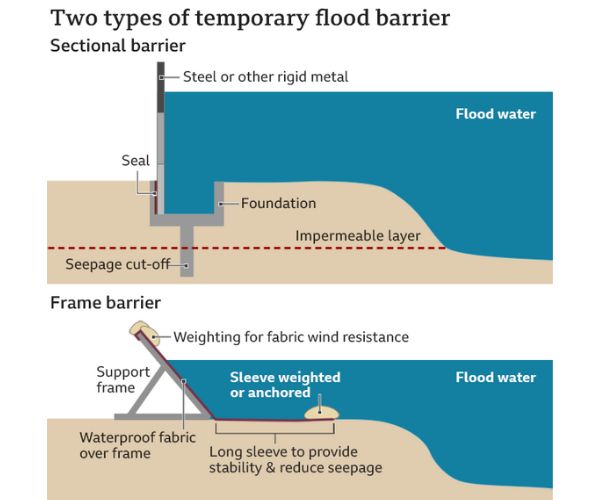
There are two types of temporary flood barriers:
- Sectional barriers and,
- Frame barriers.
Each barrier has its specialty and way of functioning. To get a better idea about how these kinds of barriers help, read down below:
1. Sectional barriers– These barriers are a type of barricade; they consist of a seal, a barricade made of steel or other rigid metal, an impermeable layer of sand, a foundation wall,
and a seepage cut-off. Here the barricade of steel and the foundation prevents the flood water to flow to the other side.
2. Frame barriers– The specialty of the frame barriers is that they use the weight of floodwater to hold them in place. They consist of a support frame, waterproof fabric which is attached over the frame,
a long sleeve to provide stability and reduce seepage, a weighting of fabric on the top of the frame to resist wind, and a weighted sleeve or anchored at the bottom of the frame.
Why are Flood Barriers used?
A flood event leads to the complete upheaval of your life and usually means moving out of the property for several months while the clean-up and repair are complete. So it is being a victim of the flood is scary as a nightmare.
Flood barriers don’t prevent floods, but yes, they are going to save you from all the things discussed above:
- They are going to provide your house and its furniture full protection.
- They are going to resist the flood water entering your homes.
- They will save you from huge losses.
- They will not make you leave your house as there will be minimal need for maintenance or repair.
If you live in a flood-prone area that seems to get flooded on occasion, it may be a smart idea to either install a fortress of sandbags around your home or start to invest in some easy ways to protect your home from floodwater.
We don’t assure that sandbags will work in every situation and can tolerate the high flow of water, but flood barriers act as flood control devices to protect your property, eliminating the task of clean-up, reducing the damage, etc.
How do Flood Barriers work?

- When barriers are not in use, the opening remains unobstructed, allowing full access when required.
- When the threat of flooding becomes apparent, commence the deployment process by sliding in the flood boards inside both the vertical side rails.
- There are two thick gaskets, one at the front and one at the back; these gaskets seal to the front and to the back of each flood board.
- There are gaskets along the entire horizontal length of each floorboard; when the compression system is deployed, all the gaskets are compressed down to the ground and against each side of the flood boards to create the watertight seal. This is how the home flood barrier works.
Installing an Inflatable Flood Barrier
An Inflatable Flood Barrier is not a normal barrier, but it has something special in it. Unlike other inflatable barriers, which are temporary in nature. These barriers have flexibility with their vinyl-coated polyester material. They are reusable too.
Now how these Inflatable flood barriers are installed. At first, they are unrolled very easily and inflated in a particular area. As the water level rises up to 25%, stabilization is provided to the barrier by using a freeboard.
As the hydrostatic pressure is exposed to a certain level in the barrier, the patented internal baffle system locks into place. As a result, a watergate is created between the barrier and flowing flood water.
Are You Ready for a Flood Event?
Life is beautiful as well as uncertain at the same time. You never know what is going to happen next when it comes to the environment. We as human beings can only forecast and can take measures to prevent those mishaps. Make sure have a ground moisture meter to detect the water level, this helps in prediction of floods.
Talking about natural calamities, we don’t have any control over them. Sometimes it becomes very hard to save our lives from those scary waves of tsunamis and tornadoes. But as a sensible person, everyone tries to think of solutions that can at least save our life and also save us from huge losses.
As earlier discussed in the earlier section, there are various methods through which you can prevent flood water from entering your property. Creating a dam between storm surges or water drainage and flood protection barriers are some of the best examples. Make sure to have the best flood barrier for your safety.
FAQ
What are the strategies used to prevent floods? or How can cities prevent floods?
Strategies that can be applied to prevent floods are described below:
● Plant more and more trees; this helps in soil and water retention.
● Introduce better flood warning systems.
● Build terrace slopes to reduce slope flow.
● Practicing alluvium technology, this is a man-made technique where channels are made to divert water.
● Constructing dams, dykes reservoirs.
What are flood causes?
● Global warming causes the melting of glaciers and snow resulting in increasing of the water level of the ocean and seas, which causes floods.
● Another reason for a flood can be cloud bursts and heavy rain in river areas.
● Soil erosion can also cause floods because soil acts like a sponge by absorbing water, but when there is not sufficient soil available, the water, along with the soil, flows in the residential area.
Final Talk
No one knows when we are going to be the victims of any natural calamity. If our mother nature is beautiful, it is dangerous too. We need to be attentive and alert wherever it is possible. We tried to discuss every point related to your safety and questions. Remember, before using the flood door barrier, one should make sure that there are no more entry points for the flood water to enter that house. Fully protecting a home from flooding is everyone’s utmost priority. Everyone should never take it for granted. I hope this article solves all your queries, till then keep reading!


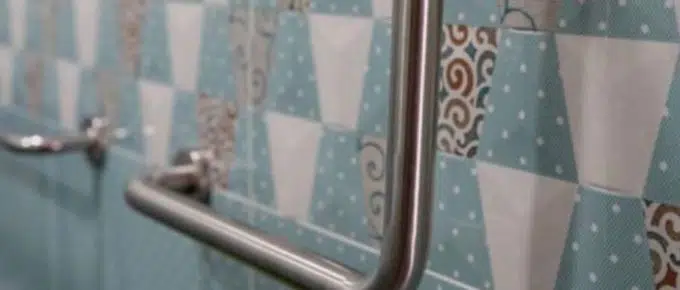
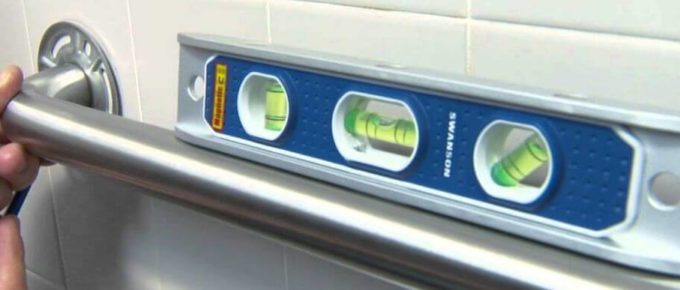
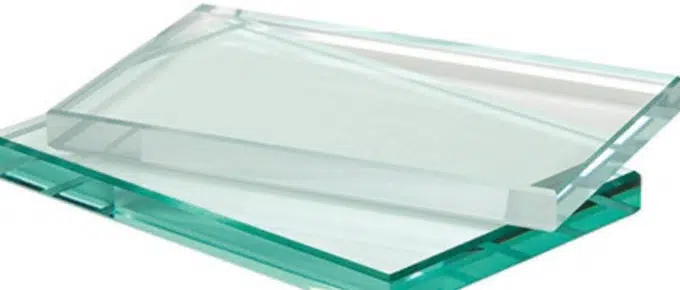
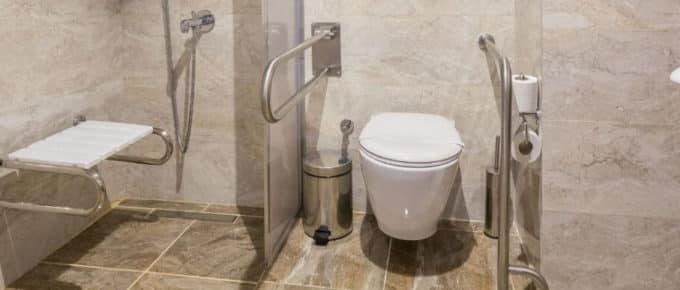

Leave a Reply